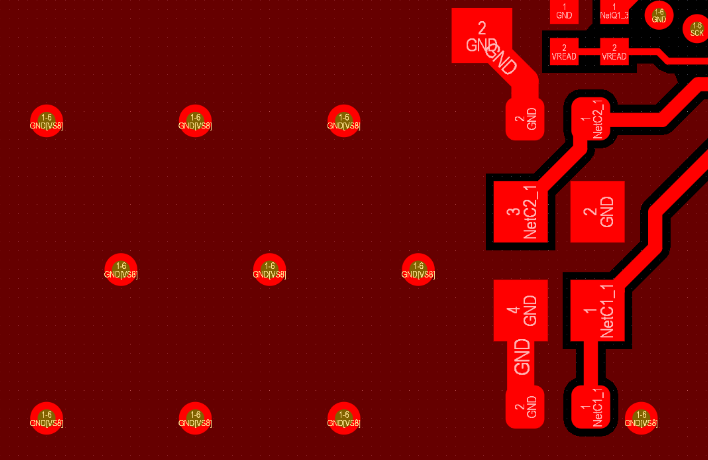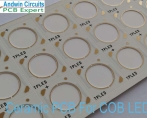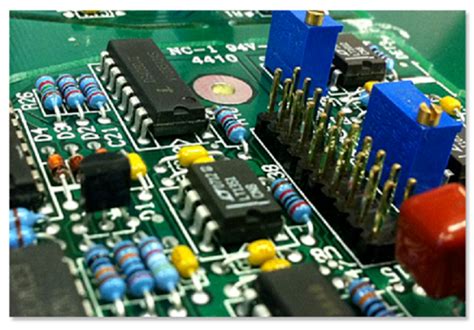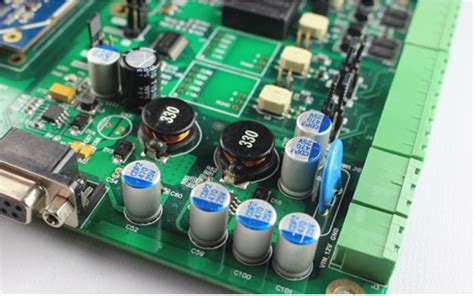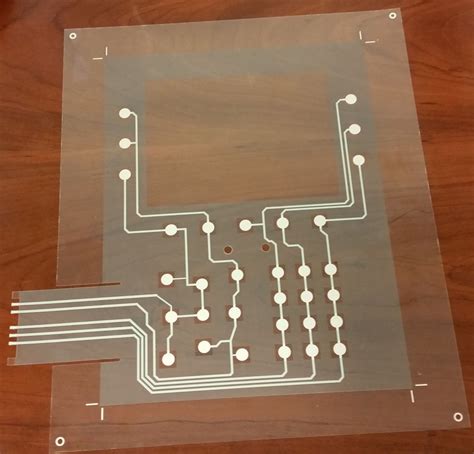Essential Guide to SMT PCB Assembly Techniques and Benefits

Key Takeaways
In the realm of pcb assembly, Surface-Mount Technology (SMT) has revolutionized the way electronic components are attached to circuit boards. One of the most significant takeaways from understanding SMT pcb assembly techniques is how they streamline the pcba process, making it faster and more efficient. The utilization of SMT allows for a more compact design, reducing the physical space that components occupy on the board, which ultimately leads to lighter and smaller devices.
Additionally, the precision and automation inherent in SMT processes not only enhance production speed but also improve consistency in quality. This is crucial for projects requiring high reliability, such as those in medical or aerospace applications. Another compelling advantage of SMT is its capacity for cost reduction; by decreasing manual labor and minimizing material waste during production, companies can achieve a significant decline in overall costs associated with pcb assembly.
In summary, incorporating surface-mount technology into your electronic projects ensures improved efficiency, enhanced reliability, and lower costs—all essential factors that contribute to a successful pcba outcome. The long-term implications for manufacturers adopting SMT techniques point toward a future trend favoring automation and advanced technology integration, bridging gaps between functionality and design excellence.
| Benefits of SMT PCB Assembly | Traditional PCB Assembly |
|---|---|
| Reduced Size | Larger Footprint |
| Faster Production Cycle | Slower Production Cycle |
| Lower Costs | Higher Costs due to labor |
| Improved Reliability | Variable Reliability |
| Easier Component Placement | Manual Component Placement |
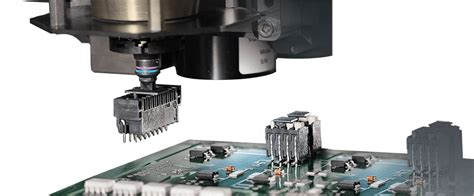
Introduction to SMT PCB Assembly
Surface-mount technology (SMT) has revolutionized the field of PCB assembly by streamlining the manufacturing process and increasing the density of electronic components on boards. In contrast to traditional through-hole techniques, which require components to be inserted into drilled holes, SMT allows for components to be mounted directly onto the surface of the printed circuit board (PCB). This shift has led to significant advantages in terms of size, weight, and efficiency, making it a popular choice for modern electronics.
One of the most notable transformations brought about by SMT is its ability to accommodate smaller components that are more efficient and reliable than their larger counterparts. As devices become increasingly compact and feature-rich, this technique enables manufacturers to maximize space while maintaining performance levels. Moreover, with pcb assembly methods that leverage SMT, production times can be drastically reduced due to less manual intervention required during assembly.
Additionally, employing SMT in pcba leads to potential cost savings. By utilizing highly automated assembly methods, manufacturers can significantly reduce labor costs while enhancing production speed. As noted by industry experts:
“Embracing surface-mount technology not only accelerates production but also aligns with contemporary demands for high-quality electronics.”
Thus, it is evident that understanding SMT PCB assembly is crucial for anyone involved in electronic manufacturing or engineering projects. Its benefits extend beyond mere convenience; they fundamentally alter how we design and think about electronics today.
Key Techniques in Surface-Mount Technology
The implementation of Surface-Mount Technology (SMT) in PCB assembly represents a significant advancement in the field of electronics. Among the primary techniques employed in SMT are the use of precise placement machines, which automatically position components onto a printed circuit board (PCB) with exceptional accuracy. This is often complemented by solder paste printing, where paste is applied to pads on the board before components are placed, ensuring robust electrical connections. The combined techniques facilitate high-density layouts that can accommodate smaller and more complex designs, ultimately leading to enhanced performance and functionality in electronic devices.
Another vital aspect of SMT involves reflow soldering, a process where the solder paste is heated to create solid bonds between components and their respective pads. This technique not only improves the overall strength of connections but also significantly reduces manufacturing time compared to traditional methods. Furthermore, rigorous testing procedures such as Automatic Optical Inspection (AOI) and x-ray inspection are integral to this stage, ensuring that each PCBA meets stringent quality standards.
The shift toward SMT also embraces innovations like embedded passive components and multi-layer circuit boards which further optimize space and reduce production costs. As technology advances, these key techniques will continue to evolve, enhancing both efficiency and reliability in pcb assembly processes, yielding greater satisfaction for both manufacturers and end-users alike.
Advantages of SMT in Electronic Projects
The integration of Surface-Mount Technology (SMT) in pcb assembly processes presents numerous advantages that significantly enhance electronic projects. One of the primary benefits is the capability for higher component density, allowing designs to be more compact without compromising functionality. This density not only optimizes space on the printed circuit board but also contributes to a reduction in overall size, making products smaller and more portable. Furthermore, pcba processes utilizing SMT facilitate faster assembly times due to automated machinery, leading to increased production efficiency. The soldering methods used in SMT improve connection stability, reducing the likelihood of defects and enhancing overall performance. Additionally, the ability to place components on both sides of the board offers designers greater flexibility in layout, which can further drive innovation in product design. Ultimately, these advantages not only improve reliability and efficiency but also lead to significant cost savings over time—potentially mitigating risks associated with electronic projects. As technology evolves, embracing SMT within pcb assembly workflows can be a pivotal step toward achieving higher quality and performance standards in the competitive landscape of electronics manufacturing.

Cost Reduction through SMT PCB Assembly
One of the significant advantages of SMT PCB assembly lies in its potential for cost reduction. By utilizing surface-mount technology (SMT), manufacturers can minimize material costs through the efficient use of space on printed circuit boards (PCBs). This technology allows for a higher density of components, which ultimately leads to smaller and lighter products. Additionally, PCBA processes often incorporate automated techniques that reduce labor costs and assembly time. Fewer manual interventions decrease the risk of human error, ensuring consistent quality and reliability in the pcb assembly process. The streamlined production timelines associated with SMT also mean lower overhead costs for manufacturers, allowing for more competitive pricing in the market. Overall, adopting SMT in your pcb assembly can prove to be a strategic decision that not only enhances efficiency but also significantly reduces expenses, thus maximizing profitability without compromising on quality.
Enhancing Reliability with Surface-Mount Technology
The adoption of Surface-Mount Technology (SMT) plays a pivotal role in enhancing the reliability of PCB assembly processes. By facilitating the attachment of components directly onto the surface of printed circuit boards, SMT significantly reduces the risk of mechanical failures that can occur in traditional through-hole methods. The compact nature of SMT allows for a tighter grouping of components, which not only optimizes space but also minimizes stress on solder joints during thermal cycling. Furthermore, the precision offered by modern SMT machinery ensures that every component is accurately placed, thus bolstering overall circuit integrity. As a result, products assembled using SMT techniques often exhibit improved performance and longevity, making them ideal for high-reliability applications such as medical devices and aerospace electronics. The technical advancements in PCB assembly not only streamline production but also contribute to achieving a higher quality end product by reducing potential points of failure that can arise from soldering defects. In conclusion, utilizing pcba techniques rooted in Surface-Mount Technology effectively heightens the reliability and efficacy of electronic projects while accommodating evolving design requirements in today’s fast-paced technological landscape.
Comparing SMT and Traditional PCB Assembly Methods
When evaluating SMT PCB assembly against traditional through-hole techniques, the differences in efficiency, scalability, and reliability become apparent. Surface-mount technology (SMT) allows for components to be placed directly onto the surface of a printed circuit board (PCB), which often leads to a more compact design. This compactness is not only beneficial in terms of space utilization but also allows for higher component densities, which is essential for modern electronics demanding miniaturization. In contrast, traditional methods require the components to be inserted into holes drilled into the PCB, limiting design flexibility and increasing assembly time.
Furthermore, PCBA that utilizes SMT can be automated more easily than those using through-hole techniques. This automation enhances assembly speed and consistency while reducing the potential for human error during the manufacturing process. Additionally, SMT components typically have lower profiles compared to their through-hole counterparts, contributing to better thermal performance and reliability under various environmental conditions. By adopting surface-mount technology, manufacturers can not only reduce costs associated with labor-intensive assembly processes but also position themselves competitively in a rapidly evolving electronic landscape. Overall, while both techniques have their merits, the advantages offered by SMT PCB assembly increasingly make it the preferred choice for many electronic applications today.
Best Practices for Successful SMT Assembly
When it comes to SMT PCB assembly, adhering to best practices is crucial for achieving optimal results in your electronic projects. One of the primary considerations in pcb assembly is the importance of selecting high-quality components that align with your project’s specifications. This not only impacts the performance of the PCBA but also enhances overall reliability. Additionally, maintaining a clean and controlled environment during the assembly process helps prevent contamination and defects, which can compromise the integrity of solder joints.
Furthermore, using automated assembly techniques can significantly streamline operations, reducing human error while increasing efficiency. Implementing thorough testing procedures throughout the SMT assembly process ensures that any potential issues are addressed early, thus minimizing costly rework later on. It’s also essential to invest in proper training for personnel involved in pcb assembly, as knowledgeable operators are key to executing precise placements and soldering techniques effectively.
Finally, regular maintenance of machinery and equipment utilized during SMT PCB assembly can prolong their life and improve consistency in production quality. By focusing on these best practices, manufacturers can ensure that their electronic projects benefit from the numerous advantages that surface-mount technology provides while achieving high standards of reliability and performance.
Future Trends in SMT PCB Technology
As the electronics industry continues to evolve, surface-mount technology (SMT) is poised to undergo significant advancements that will further enhance PCB assembly processes. One of the most notable trends is the increasing integration of automation and robotics in PCBA manufacturing, which promises to streamline operations and reduce human error. Additionally, the rise of microelectronic components is driving the need for more sophisticated SMT techniques that can accommodate smaller chip sizes without compromising reliability. Another emerging trend is the incorporation of artificial intelligence and machine learning to optimize production lines, facilitating real-time monitoring and adaptive processes that enhance cycle times. Moreover, sustainability initiatives are prompting manufacturers to seek eco-friendly materials and practices within the SMT realm, influencing how PCB assembly will be approached in terms of material selection and waste management. As these trends unfold, they will not only redefine operational efficiencies but also transform the way electronic devices are designed and produced, securing a more resilient future for PCBA in a rapidly changing technological landscape.
Conclusion
In summarizing the journey through SMT PCB assembly, it becomes evident that the integration of surface-mount technology significantly transforms the landscape of electronic manufacturing. By employing SMT, designers and engineers can leverage compact designs that optimize space while enhancing performance. The fundamental benefits of this approach are multifaceted; reducing production costs, improving assembly speed, and increasing the overall reliability of electronic products are just a few key factors that contribute to its widespread adoption in the industry. Furthermore, as changes in market demands continue to evolve, SMT offers flexibility and adaptability that traditional pcb assembly methods may struggle to achieve. With best practices in place and advancements in technology on the horizon, embracing pcba innovations will likely lead businesses to new heights in efficiency and product quality. As industries move forward, recognizing these benefits will be vital for maintaining a competitive edge within the technological landscape.
FAQs
What is SMT PCB assembly?
SMT PCB assembly, or surface-mount technology PCB assembly, is a method used to mount electronic components directly onto the surface of a printed circuit board (PCB). This technique allows for a more compact design and enhances the reliability of electronic devices.
What are the main benefits of using SMT in PCBA?
The main benefits of using SMT in PCBA include improved efficiency in assembly, reduced manufacturing costs due to fewer materials and shorter assembly times, and increased reliability of the final product thanks to better electrical performance and sturdier component placements.
How does SMT compare to traditional PCB assembly methods?
While traditional PCB assembly methods often involve through-hole components, SMT enables smaller components to be used, resulting in lighter and more compact devices. Additionally, SMT allows for higher density placements which can lead to shorter lead lengths and enhanced electrical performance.
What are some key techniques used in SMT?
Some key techniques include accurate placement of components on the PCB, reflow soldering for secure connections, and usage of automated pick-and-place machines that improve precision and speed during the PCB assembly process.
How can I ensure successful SMT assembly?
To ensure successful SMT assembly, it is important to follow best practices such as maintaining clean work surfaces, using proper soldering techniques, implementing thorough testing procedures post-assembly, and consistently monitoring equipment used during the process.


